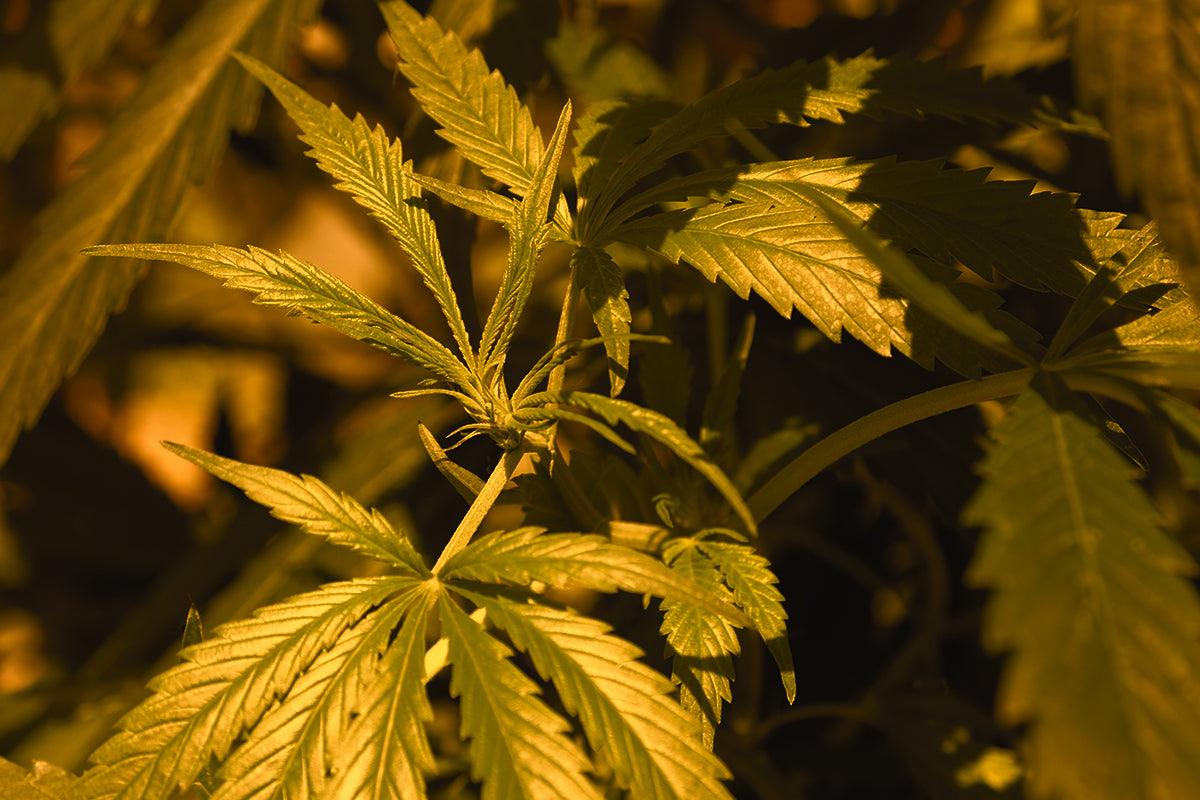Why does cannabis have such a powerful effect on our body?
The beneficial effects of cannabis are many, and often prove to be more powerful and decisive than those of similar drugs. How is it possible? Cannabis is a very precious plant, which offers real support in the treatment of very different pathologies. One of its main active ingredients, CBD - which has no psychoactive effects - has proven effective in the treatment of mood and sleep disorders, menstrual pain, epilepsy, problems related to the sexual sphere and also in the treatment of chronic pain and chemotherapy symptoms .
Marijuana is now a new frontier in the clinical treatment of many pathologies, both used in a concentrated form - CBD-based oils or crystals - and in its "natural" form - i.e. inflorescences to smoke or to use to prepare infusions and herbal teas.
Certainly the chemical composition of cannabis is powerful by nature, both in its therapeutic version, rich in THC and CBD , and in the light version, in which CBD prevails while THC is present in small quantities (<0.2%). Its effects, however, are amplified by the reaction of the human organism to the interaction with cannabinoids: the human body is equipped with a group of receptors, called the endocannabinoid system , which are activated as soon as they come into contact with the active ingredients of cannabis.
What is the human endocannabinoid system?
The endocannabinoid system is made up of a group of receptors contained in the cells of the human body which, by interacting with the compounds present within Cannabis plants, gives rise to the beneficial effects of cannabis on the organism. These receptors are present throughout the human organism, with higher concentrations in some areas, and are normally activated by the so-called endocannabinoids , compounds similar to those of cannabis , naturally present within our body.
The molecules contained in Cannabis plants, called cannabinoids or phytocannabinoids, have a molecular structure very similar to that of the endocannabinoids produced by the human body and, therefore, activate the same receptors.
Both THC and CBD interact with these receptors to influence appetite, immune function, pain management, and many other factors.
Cannabinoids and endocannabinoids
The endocannabinoid system is present in the body of almost all mammals, including humans. Everything present in the body has a precise function, and the endocannabinoid system has the function of maintaining the body's homeostasis , that is, ensuring that the internal balances of each of us remain constant over time. This system is made up of receptors found inside the body's cells, which react only to specific molecules.
The ECS (Endocannabynoid System) reacts to all cannabinoids, both those contained in the cannabis plant, the famous phytocannabinoids THC and CBD, and those produced naturally by the human body, such as anandamide. How come? All cannabinoids share a very similar molecular structure , therefore the homeostasis processes triggered by endocannabinoids are activated even in the presence of THC and CBD.
This incredible system was discovered by Dr. Ralph Mechoulam , of the Department of Pharmaceutical Chemistry and Natural Products at the Faculty of Medicine and Surgery of the Hebrew University of Jerusalem. Dr. Mechoulam was also the one who discovered THC as the main active component of the Cannabis plant. This godfather of Cannabis noted that the endocannabinoid system is mainly made up of two receptors: CB1 and CB2.
The CB1 receptor interacts with THC through very particular mechanisms. These receptors are found primarily in the brain and male and female reproductive organs , which is why THC not only causes the so-called psychoactive "high", but can also act effectively on pain. The CB2 receptor , however, is present in both the nervous and immune systems . CB2 receptors appear to have an intimate relationship with the popular therapeutic cannabinoid CBD , capable of activating strong anti-inflammatory responses.
Considering that cannabinoids interact with our body in different ways, the potential applications of these molecules in the medical field continue to multiply, as studies aimed at discovering new ones multiply.
What are the main endocannabinoids?
Endocannabinoids are a class of bioactive lipids and have in common the ability to bind to cannabinoid receptors. The first endocannabinoid to be identified, in 1992, was anandamide (AEA), followed by 2-arachidonoylglycerol (2-AG), 2-arachidonyl-glyceryl-ether (noladin, 2-AGE), virodamine and N-arachidonoyldopamine (NADA), identified more recently.
- Anandamide , or arachidonoylethanolamide (AEA), is a neuro-modulator that mimics the effects of psychoactive compounds found in cannabis, known as cannabinoids. This compound, whose name derives from the Sanskrit "ānanda", internal bliss, was isolated and characterized by the Czech chemist Lumír Ondřej Hanuš and the American pharmacologist William Anthony Devane in the laboratory of Raphael Mechoulam at the University of Jerusalem in 1992. Its localization in the CNS it is at the level of the postsynaptic membrane of the brain and, if released, binds the CB1 receptors. Its presence was also observed in plasma, also suggesting its role at a hormonal level.
- 2 -AG, on the other hand, is present in a significantly higher quantity and acts more selectively on the CB1 receptor. The latter receptor is mainly responsible for the stimulating and neuromodulatory effects of cannabis, especially with regards to THC.
- N -Arachidonoyldopamine (NADA) is another endocannabinoid that activates the CB1 and TRPV1 receptors and its action is particularly important in the Substantia Nigra, the internal area of the brain used to produce dopamine and other neurotransmitters. Its action on this brain area has been studied recently and it has been discovered that, together with some opioids, endocannabinoids activate and inhibit alternate parts of the Substantia Nigra.
- Palmitoylethanolamide ( PEA ), Lysophosphatidylinositol (LPI) and Noladin are other endocannabinoids to consider for their ability to activate specific receptors. PEA acts more on the PPAR-Alpha receptors, promoting the immune response and protection from inflammation, but also on the CB3 and CB4 receptors. LPI acts on CB3 receptors promoting spatial learning. Noladin, on the other hand, acts on the CB1, CB2, CB3, TRPV1 and PPAR-Alpha receptors, activating the entire cannabinoid system and boasting a longer action time, thanks to its slow degradation.
How does the endocannabinoid system work?
These lipid mediators, together with cannabinoid receptors and related processes of synthesis, transport and degradation, constitute the so-called endocannabinoid system. Endocannabinoids are produced inside neuronal cells, but are not stored in vesicles; instead, they are synthesized as needed, following a stimulus that causes the depolarization of the cell membrane .
Once synthesized, endocannabinoids are immediately released from the cell and bind to cannabinoid receptors present on neighboring cells or on the same cell that produced them, thus behaving as autocrine or paracrine mediators. In particular, it has been hypothesized that endocannabinoids behave as retrograde messengers: synthesized in the postsynaptic cell, they would activate the CB1 receptors of the axons of the presynaptic cell.
Once their biological action has been completed, the endocannabinoids will be inactivated through enzymatically regulated degradation or recycling mechanisms. These processes involve the "reuptake" of endocannabinoids (reuptake) by passive diffusion across the cell membrane, enzymatic intracellular hydrolysis and the recycling of hydrolysis products in membrane phospholipids.
But how do cannabinoids have such a powerful impact on our body? The endocannabinoid system essentially regulates all the basic functions and processes of our body, with the aim of maintaining homeostasis, which means it acts directly on mood, sleep, appetite, metabolism, pain, memory, immune functions, inflammation , neuroprotective and developmental functions, digestion .
Exogenous cannabinoids
Unlike endocannabinoids, exogenous cannabinoids, such as those found in cannabis plants, can enter our bodies and remain active for much longer periods of time . This has a significantly greater effect on the activation of the endocannabinoid system (ECS), allowing its processes to work much more effectively than they normally do.
- Research has shown that the cannabinoid THC binds to both receptors (CB1 and CB2), in both cases activating the endocannabinoid system. The effects of THC are commonly considered psychological, but the compound itself has the ability to cause effects that go far beyond the simple "high" normally associated with marijuana. It can act positively on chronic pain, nausea, appetite, asthma and glaucoma . Furthermore, it has been shown to have beneficial anti-cancer properties and symbiotic effects on the body when taken together with CBD.
- CBD does not have the ability to bind to all receptors, but it works by inhibiting the FAAH enzyme. This prevents and slows the breakdown of anandamide, one of the most important endocannabinoids in our body. The result is a buildup of anandamide in the brain . While THC causes psychoactive effects on the brain, CBD acts on the body. However, research into the possible therapeutic benefits of the latter cannabinoid is only just beginning. Today we know for sure that it helps in therapies to treat some serious health problems, inhibiting the growth of tumor cells, reducing and preventing inflammation, nausea, diabetes, PTSD, schizophrenia, rheumatoid arthritis, epilepsy and cardiovascular diseases. Furthermore, it has been shown to have effective antipsychotic, anxiolytic and pain-relieving properties against muscle spasms or neuropathic pain.






